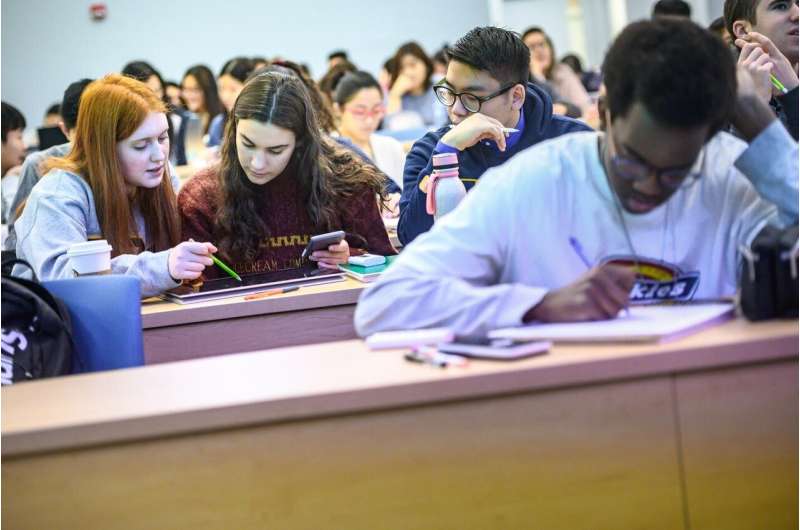Small changes, big gains: Low-cost techniques dramatically boost learning in STEM classes

Low-cost, active teaching techniques—particularly group work and worksheets—substantially improve learning in university science classes, according to a new study involving 3,700 University of British Columbia (UBC) biology students.
"Many university STEM classes continue to rely on conventional lectures, despite substantial research that suggests active teaching techniques like peer instruction and group discussion are more effective," said UBC researcher Patricia Schulte, senior author of the study, published this week in PLOS ONE.
"But this confirms that group work significantly enhances how well students grasp and retain concepts. And strikingly, having students go through worksheets in groups—an easily implemented, low cost classroom technique—resulted in particularly strong improvements in scores."
Increasing class time dedicated to group work just 10 percent (five minutes in a 50-minute class) correlated with roughly a three percent improvement in student performance. That equates to almost one letter grade, depending on the institution. Using in-class worksheets—a wide variety of structured handouts that contain a few questions or tasks related to a concept—resulted in even more significant increases in student scores.
In general, classes had to spend half or more of their time in groupwork to see significant boost in learning.
The study is the first large-scale, direct observation of classes across a curriculum that examines the impact of different active learning approaches. The researchers observed classroom practices across 31 lecture sections in the biology program at UBC, classifying classes by the degree of group work conducted in each. They administered tests to more than 3,700 students at the beginning and end of term to assess the extent of their learning, independent of regular course exams. Most students were in first and second year.
Most of the previous work on active learning is based on instructor self-reports, qualitative surveys, or indirect observations of active learning, rather than direct assessments of teaching practices and independent assessments of learning.
More information: Laura K. Weir et al, Small changes, big gains: A curriculum-wide study of teaching practices and student learning in undergraduate biology, PLOS ONE (2019). DOI: 10.1371/journal.pone.0220900
Journal information: PLoS ONE
Provided by University of British Columbia



















